2023 ITG Conference Report - Day 5 - Saturday, June 3
The 47th Annual International Trumpet Guild Conference - Minneapolis, Minnesota (USA)
Special Daily Report • Compiled by Peter Wood
Photos by Steven Garcia, Benjamin Lowe, Josh Rzepka, and Michael Anderson
Saturday, June 3, 2023
Click here for more photos from the ITG Conference
Sarah Stoneback Youth Day warm-up session - Creating Your Flexible Warmup
In Dr. Sarah Stoneback’s wonderful warm-up session for approximately 25 participants, she invited the class to brainstorm what works for our own warm-up routines in teams of three or four. After she realized her need to move beyond a set warm-up routine of fifteen years, she shared her journey to try new things. Eventually she settled on five key principles that guided a flexible approach to warming up: 1) low before high, 2) soft before loud, 3) down before up, 4) slow before fast, and 5) slur before tongue. She invited the room to try some of her own original exercises that were based on Schlossberg and the like. These exercises often incorporated a note-bending style that helped find the center of the tone and connected notes of the harmonic series. Stoneback, as always, inspired everyone to think about how we get to the next level. (Stanley Curtis)
Brianne Borden warm-up session - Mindfulness Practice for Performance Anxiety
In Brianne Borden’s early-morning warm-up session, she began with a discussion on why our bodies experience performance anxiety and the common symptoms that can accompany it. This was followed by a brief explanation on the science behind mindfulness and how it counteracts the effects performance anxiety has on our nervous system. Brianne then offered a few mindfulness practices in which the audience participated, including breathing and meditation exercises. The session continued with group leadpipe buzzing, followed by long tones that incorporated mindfulness breathing. Brianne ended the warmup by having the audience wander around the room with awareness and then connected this relaxed walking to flexibility exercises. (Kyle McLean)
Marcos García Vaquero warm-up session - Daily Routine: Focus and Organization with Marcos García Vaquero
Marcos García Vaquero’s early morning session had a few dozen eager trumpeters of all ages in attendance. With some of the slides in Spanish and the presentation in English, this was a truly international warm-up session that was informative and enlightening. Five primary points served as the foundation for the presentation–posture, breath, sound production, movement of sound, and character of articulation. Exercises by Louis Davidson, Vincent Cichowicz, Pacho Flores, and Luis González were used in the session. Singing and flutter tonguing were incorporated through the various exercises that took players through every key as well as from well below the staff to three or four ledger lines above the staff with ease and beauty. Vaquero’s teaching style and personality made for an inspiring session for all in attendance. (Lacey Phelps)
Judit Martín González session - Music and Early Childhood: Music, More than a Game (Part II): Trumpet Technique as a Game
Judit Martín González presented a fantastic interactive lecture on how to incorporate games while teaching young musicians. From beginning to end, she had the room dancing, singing, and moving as she discussed several methods that encourage students to play musically from the moment they begin learning. González used several backing tracks that she composed and recorded to teach about tone production, sound, rhythm, articulation, and harmony. By using games, González showed how students learn faster and retain more than the traditional method of working through a method book. She also showed how by using small toys like a party whistle students can see if their air is flowing while tonguing or slurring through partials. González also had volunteers help demonstrate how she uses the third Clarke study to teach harmony and chordal progressions in music. Everyone in the room benefited from the information and methods that she provided in her very enjoyable lecture. (Spencer Wallin)


Dave Wondra youth session - Expand Your Ability Through Practice That Works
Dave Wondra led an informative session on facilitating learning in non-traditional ways. He talked about how some people incorrectly believe that all they need to do is get the information and that their results will then change. He referred to this as a belief in automatic and somewhat magical (or “automagic”) change. Wondra’s message was that that method does not work well, and he went on to discuss what does work. Effective change happens through a cycle of acting, reflecting, and refining. By repeating this cycle in practice, we can move ourselves forward in ability. Wondra emphasized that improving does not mean we will not experience plateaus in our progress. To move past these plateaus, however, we must experiment with different approaches. He reminded the audience that a detrimental hindrance to effective practicing is a lack of focus, which research suggests has been caused by the digital age, and he advocated for meditation and mindfulness as a great way to train focus and attention. Finally, Wondra emphasized the importance of believing in oneself and trusting the process. (Christopher Luebke-Brown)
Joe Montelione session - Daily Routines for the Active Community Musician
Joe Montelione’s session, “Daily Routines for the Active Community Musician,” focused on how someone with a nine-to-five job outside of music can create an effective practice routine on trumpet. The importance of goal setting to plan an appropriate routine was emphasized. Montelione discussed his four areas of emphasis on trumpet–sound production, motion, valve coordination, and articulation–and how to develop a routine that addresses each area, even if for a short duration. Montelione detailed the benefits of addressing all the fundamentals of trumpet, even in a fifteen-minute practice session, and encouraged audience members to take advantage of any available time to get in a practice session. (Julia Bell)
Dani de Baza session - The Spanish Cornet
Dani de Baza engaged attendees in the history, tradition, and playing style of the Spanish cornet in this illuminating session. de Baza demonstrated the performance style on the instrument and displayed the construction of the instrument and its unique rotating valve, which changes the instrument from C to D-flat. His presentation guided the audience through a history of the instrument and its use for religious and military purposes—particularly during Holy Week, when entire bands of Spanish cornets and percussion often play for entire twelve-hour processions. With the internet, public knowledge of these bands have increased immensely. de Baza described the inspirational beginnings of his solo career, which started with a demonstration for an instrument maker and led to several international tours and recording of two albums. The session ended with de Baza sharing his new single, which features the style and music of the Spanish cornet. (Spencer Brand)


Ryan Anthony Memorial Trumpet Competition - Youth Competition: Junior Division
The Junior Division of the Youth Competition consisted of eight performers, each presenting etudes from Charlier, Brandt, and Arban. The first competitor was Ruichen Wu, who performed Arban’s Characteristic Study #5. He delivered a strong interpretation of this piece, showcasing his technical proficiency. Jiu Shi followed with Charlier’s Etude #6. Highlighted by a sweet, lush tone, he gave a passionate rendition of this work. Bryce Ogden took the stage and executed Brandt’s intervallic Etude #14 with crisp articulation. The next performer was Christian Garner, who delivered a beautiful depiction of Charlier’s Etude #4, showcasing extreme dynamic contrasts and a rich sound in all registers. Maxwell Janes followed with Brandt’s Etude #1, navigating the piece with strength and energy. Issac Jooun Won displayed his artistry with his rendition of Charlier’s Etude #6. Utilizing a tasteful vibrato and dark tone, his use of rubato resulted in a captivating performance. The next piece was Arban’s Characteristic Study #4, performed by Michelle Park, and she demonstrated fabulous finger dexterity. The final competitor was Leon Ye, performing Charlier’s Etude #6. He gracefully navigated the lyrical and technical demands of this work. Congratulations to all the accomplished young musicians; the judges definitely have their work cut out for them! (Steven Siegel)
Ryan Anthony Memorial Trumpet Competition - Youth Competition: Senior Division
The Senior Division of the Youth Competition consisted of select works from Theo Charlier’s Trente-Six Etudes Transcendantes pour Trompette. The first competitor was Amelia Kowalewska from Poland, who performed Number 2, “Du Style,” which showcased her fluidity and flexibility across the range of the trumpet. The second competitor was David Zhao, who performed Number 4, “Du Style.” Zhao demonstrated excellent dynamic contrast, along with fantastic technique and musicality. Sam Ferguson, from Canada, performed Number 10, “Du Rhythm,” which highlighted his impressive combination of lyrical and technical abilities. Ian Lee performed Number 6, “Du Style,” which showcased his warm sound throughout the range. Next, Hsueh-Yang Yang performed Number 23, “L’arpège.” Yang navigated difficult intervals and awkward fingerings with grace and agility. Genesis Ruiz performed Number 2, “Du Style,” boasting a huge, warm sound and beautiful vibrato. Finally, Jade Park performed Number 10, “Du Rhythm” from memory. This selection was performed with extreme precision throughout the lyrical and technical sections and allowed her to exhibit her virtuosic skills. (Kyle McLean)
ITG General Business Meeting
The Saturday morning ITG General Business meeting was quite an informative hour. President Jason Bergman summarized the events of Monday afternoon’s board meeting, sharing what is to come for ITG. Board member David Collins shared a new collaboration among European conservatories to send representatives to future ITG Conferences to build and support the organization’s international presence. Another initiative to boost international relations with trumpeters abroad is a move towards offering smaller regional ITG Conferences, focusing on a specific community of trumpet players in different countries. ITG Publications Editor Peter Wood announced that the ITG Journal will be moving to a full-color format beginning in October, and Website Director Michael Anderson plans to take a step back from his position to allow for someone more specialized in this area to begin updating the current ITG website for an updated and streamlined interface. (Jeremy Perkins)
Slawomir Cichor recital - Slavic Soul
Following the Luther College Trumpet Ensemble’s excellent prelude performance of Luckner’s The Spirit of the Lord is Upon Me and Jack Stamp’s Vociferation, Slawomir Cichor’s remarkable trumpet recital featured solo works by all Slavic composers. This recital showcased Cichor’s exceptional talent and artistry. From the moment he took the stage, his command over the trumpet was evident, as he effortlessly maneuvered through the diverse musical selections with precision and grace. He performed works by Grzeszczak, Lutoslawski, Fortuna, and Collins. In addition, the inclusion of Cichor’s own compositions added a personal touch to the recital and demonstrated his skill as both a performer and a composer. Slawmir Cichor’s recital was a testament to his exceptional musicianship and deep understanding of Slavic solo works for trumpet, and it also exposed the audience to a great collection of musical works that are not often performed. This was a truly memorable performance that left the audience in awe and longing for more. (Javian Brabham)
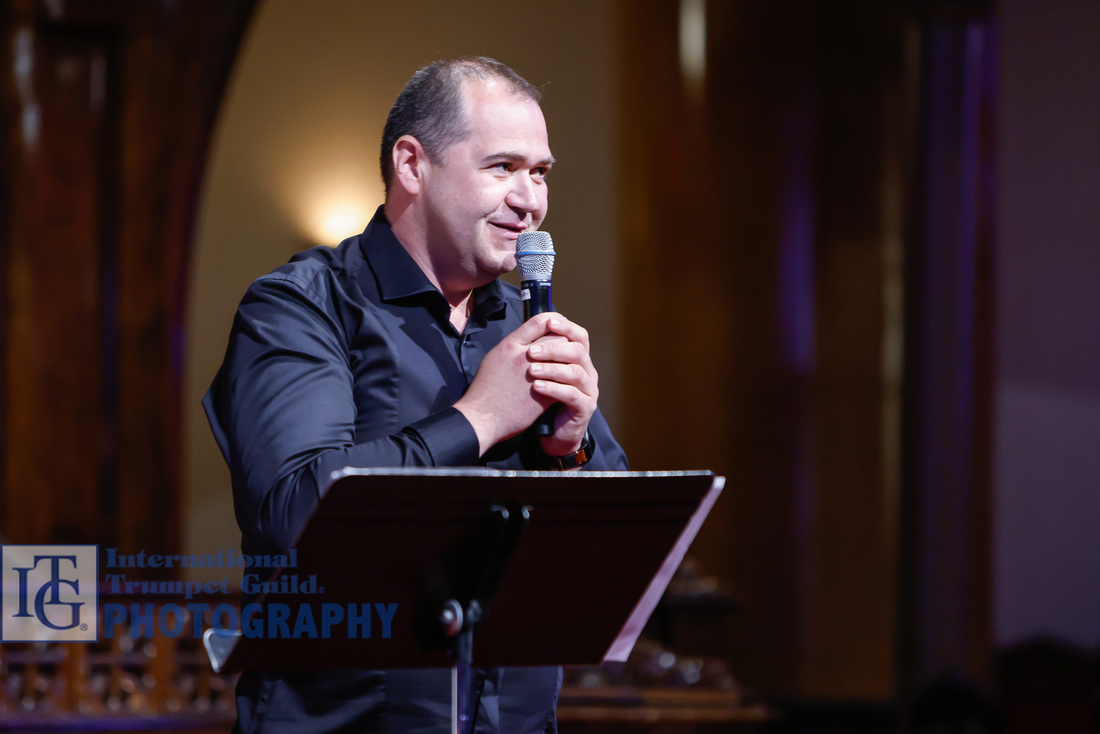

Afternoon Open Jam Session - Joey Tartell
Tartell opened the set on bass trumpet with Have You Met Miss Jones and then gave a brief, helpful welcome to participants, which included jam session etiquette. He then welcomed various performers to the stage and guided the brief talk-throughs with the soloists and rhythm section. Joey’s personality and demeanor as a teacher is perfect in this setting. He actually walked around the room and spoke with individual players, encouraging them to play. In the context of jazz education, Tartell’s approach to the jam session should be held up as a model for others to follow. This was an inclusive, welcoming environment–with an exceptional rhythm section and a gifted educator and host–which benefited everyone in attendance. (Madison Barton)
Tom Hooten session - Building a Strong Foundation: Fundamentals of Trumpet Embouchure
After a splendid prelude performance by the North Carolina – Charlotte Trumpet Ensemble, Tom Hooten presented an engaging discussion about methods to help develop your embouchure. He discussed the need to be able to talk about the mechanics and form behind healthy trumpet playing and how we need to feel comfortable discussing and trying new things. He strongly emphasized that form matters and used several non-trumpet examples of how important to continual improvement and success proper form is. Hooten shared several rules that he believes are essential for playing with good form, and conveyed how he has spent twenty years asking questions, considering context, and then searching for ways to implement changes in his playing. He ended with the advice not to accept shortcuts, but, instead, give time to your efforts and be willing to try new things even if they may feel uncomfortable. His presentation was greatly enjoyed by all in attendance. (Spencer Wallin)
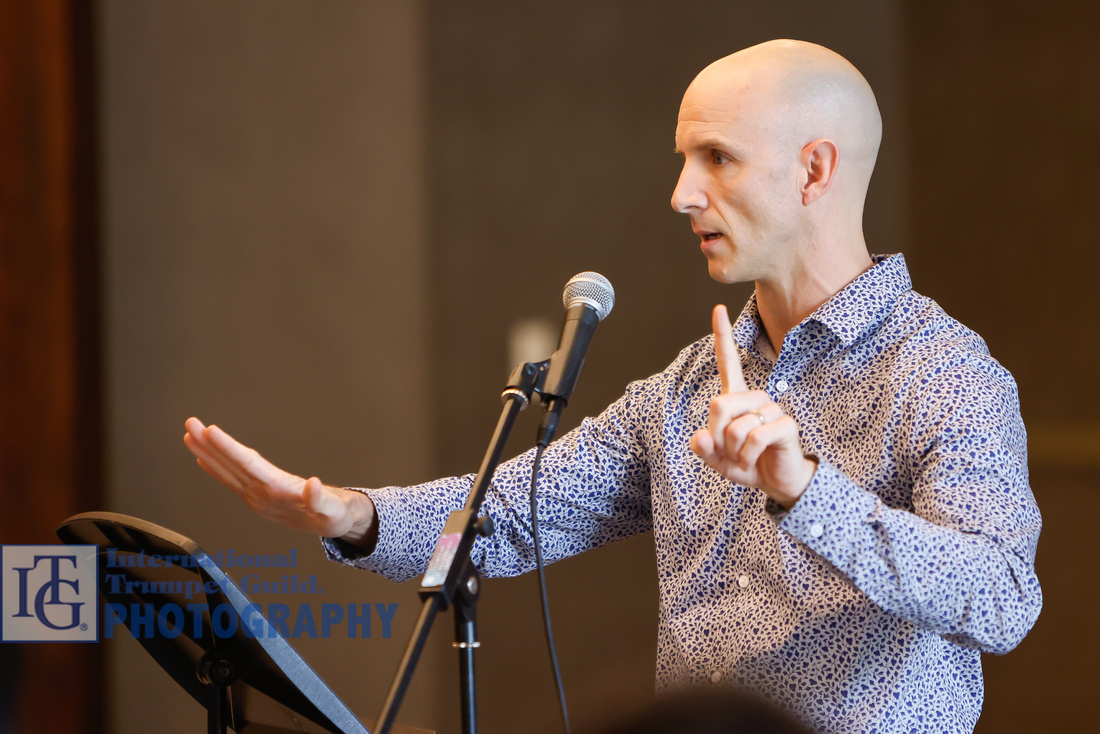

Stacy Simpson session - Making a Living as a 21st-Century Musician
In Stacy Simpson’s highly informative session, she gave the audience a brief breakdown of such careers as a university professor, orchestral performer, military performer, and a theater performer. She also weighed the advantages and disadvantages of these jobs and how their job security can vary. Simpson delved into the lifestyle of a freelance musician and how to piece together a living while hunting for a full-time “career” job. She discussed how to find available jobs, how to choose a location in which to freelance, how to secure more jobs, what kinds of performances or educational opportunities one can land, and what types of things not to do on the job. She closed her educational session with a brief layout of the financial planning required to make freelancing feasible, along with the expected tax burden that goes along with this lifestyle. (Kyle McLean)
Youth Session - Panel Discussion: Finding Success in College Audition Preparation
After an energetic performance of Jose Ursicino da Silva’s Fantasia Brasileira by the Arkansas State Fantasia Trumpet Ensemble, a room of students participated in an educational discussion on preparing for college auditions. Hosted by ITG President Jason Bergman and President-Elect Ryan Gardner, the discussion was led by a panel of successful collegiate professors, which included Brianne Bordon, Christopher Moore, Nancy Taylor, and Oswaldo Zapata. A constant thread throughout this session was the emphasis on the importance that students seek programs that align with their values and goals. The panel urged students to select schools not by their reputation, but by whether they meet those criteria. A student can successfully find a program that aligns with their values and goals by developing a positive relationship with the faculty prior to the audition, auditioning with repertoire that speaks to their strengths, and being transparent about their interests and needs. (Christopher Luebke-Brown)
Matilda Lloyd recital - Casta Diva
Ensemble de Trompetes da ESMAE filled the Westminster Sanctuary with finesse and artistry as they performed J.S. Bach’s Toccata and Fugue in D Minor (arranged by Edward Tarr and Wolfgang G. Haas) to open Matilda Lloyd’s recital. Inspired by her debut album, Casta Diva, and accompanied by pianist Maria Rutkowska, the recital featured a range of repertoire from nineteenth-century Italian opera arias to virtuosic variations on pieces that were originally composed for piano. Lloyd played with great finesse as she played various styles throughout the afternoon, showcasing her ability to change character quickly and keeping the audience engaged with the witty charm of each piece. A nice change of pace during the intermission allowed pianist Maria Rutkowska to play Artur Żuchowski’s solo Cantabile. The audience cheered in excitement as Lloyd played, and enthusiasm swept the room during each piece. (Angela King)
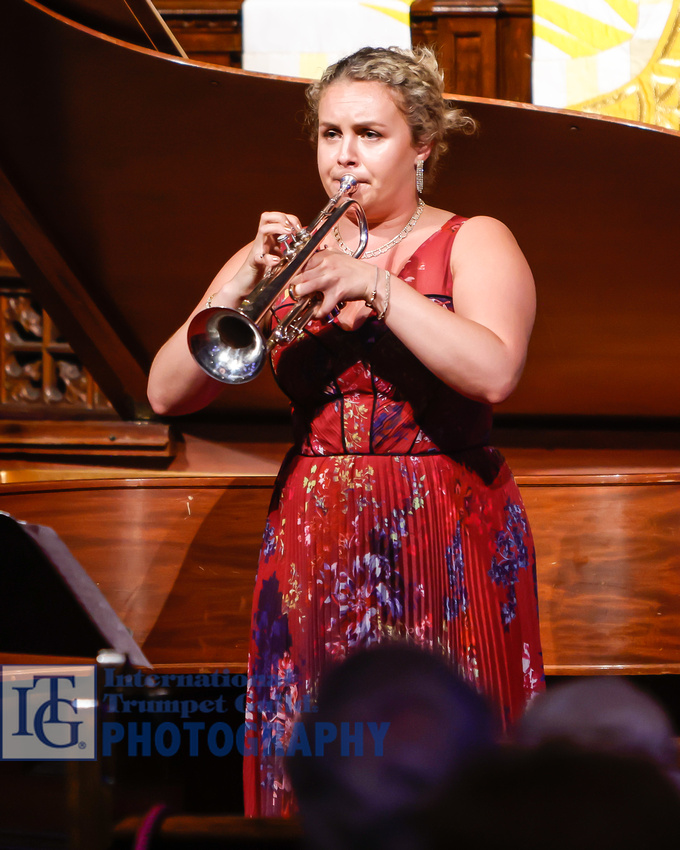

Festival of Trumpets
The Festival of Trumpets was well attended and full of varied, exciting repertoire for trumpet ensemble. The program opened with two selections performed by the Pre-Professional Ensemble, Joe Price’s Intrada Dramatica and Giovanni Gabrieli’s Canzon Primi Toni a 8. Each piece demonstrated its own distinct style, and the intensity of Intrada Dramatica created a welcome contrast to the Gabrieli. The often-deceiving difficulty of playing a Gabrieli canzona in tune and with great blend was imperceptible in the group’s performance, which was received with enthusiastic applause. The Enescu Ensemble performed “Au Soir” Nocturne by George Enescu. Featuring beautiful harmonies and lyrical passages, Enescu’s work provided a welcome slower-paced piece that showcased the beauty and lyricism that the trumpet can play. Next on the program, the Brazilian & Guests Ensemble performed two greatly contrasting selections, starting with José Ursicino da Silva’s active and exciting Fantasia Pernambucana—a true “toe-tapper.” Rogério Borges’ multi-movement No Forró do Zé Doidiça featured a lyrical opening movement, an active second movement that showcased the group’s effective dynamic contrast and ability to play in a variety of styles, and a tuneful third movement. Next on the program, the Non-Pro Player Ensemble performed David Baldwin’s Old American Songs, conducted by Baldwin. Featuring many familiar folk tunes from the traditional American canon, the ensemble performed with great energy. At this point in the program, ITG Competition Award Winners were presented with their certificates, and then the Mass Trumpet Ensemble performed Modest Mussorgsky’s “Great Gate of Kiev” from Pictures at an Exhibition as the grand finale. Featuring 38 trumpeters and conducted by Manny Laureano, this classic selection provided an exciting closer to the program. Ultimately, the Festival of Trumpets showcased the power of ITG to bring together people from many different places to make an impactful musical statement. (Julia Bell)
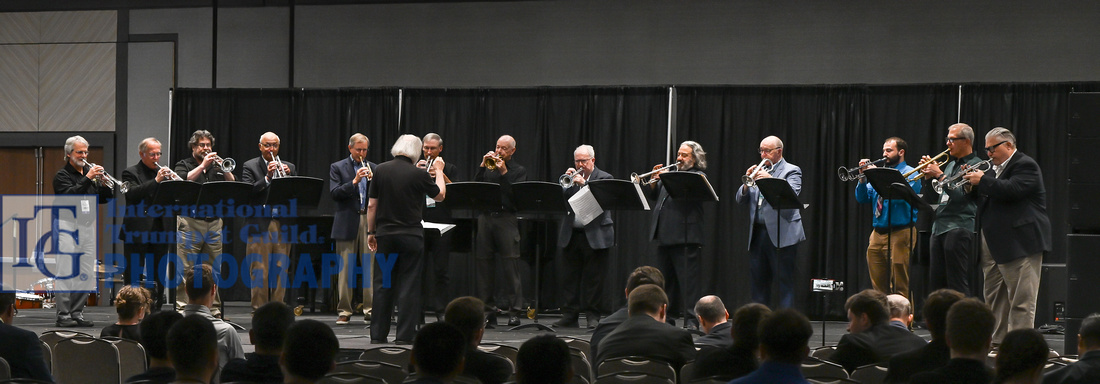

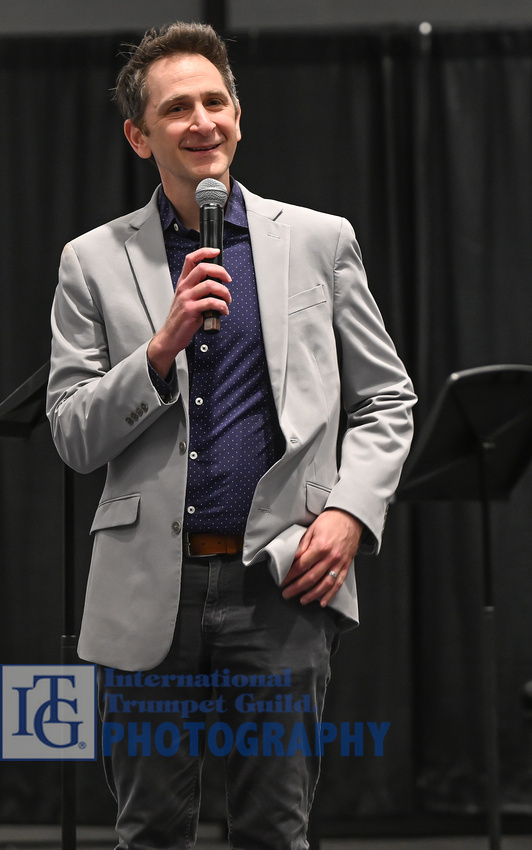

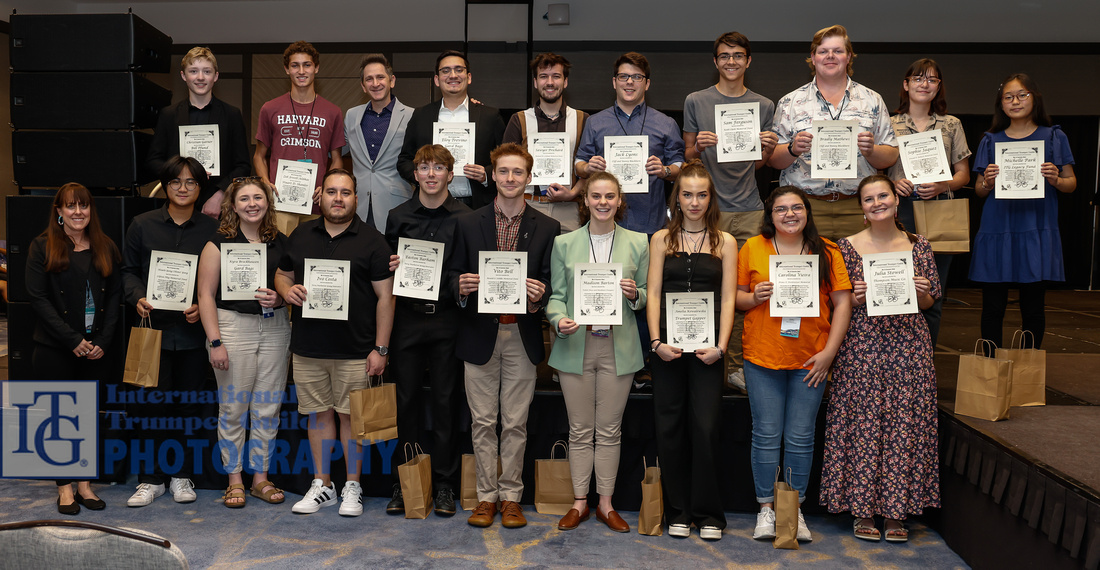

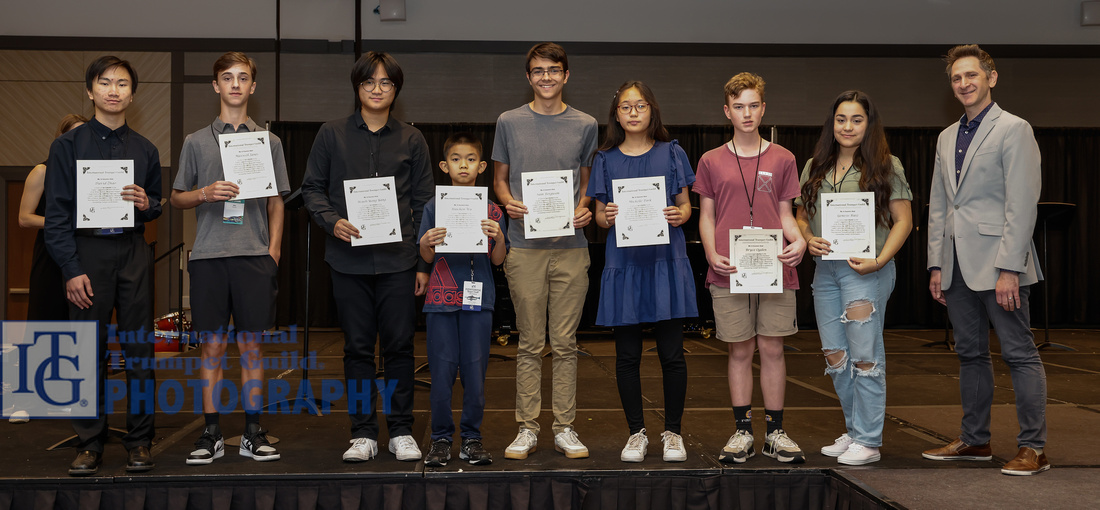

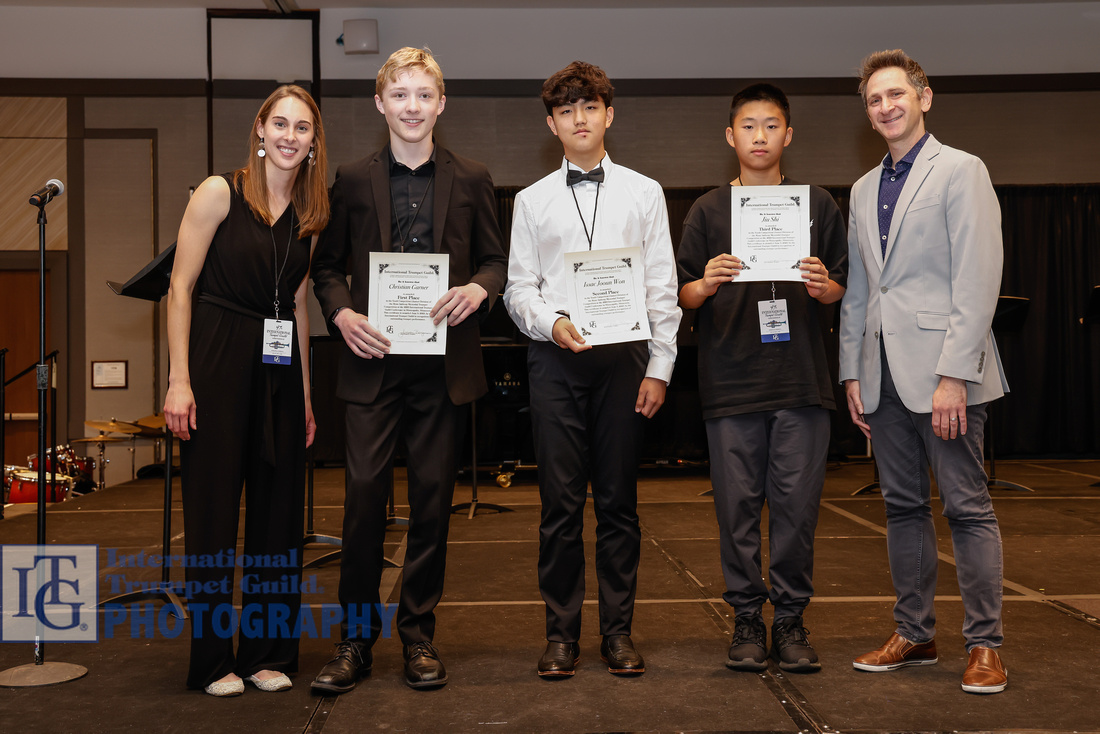

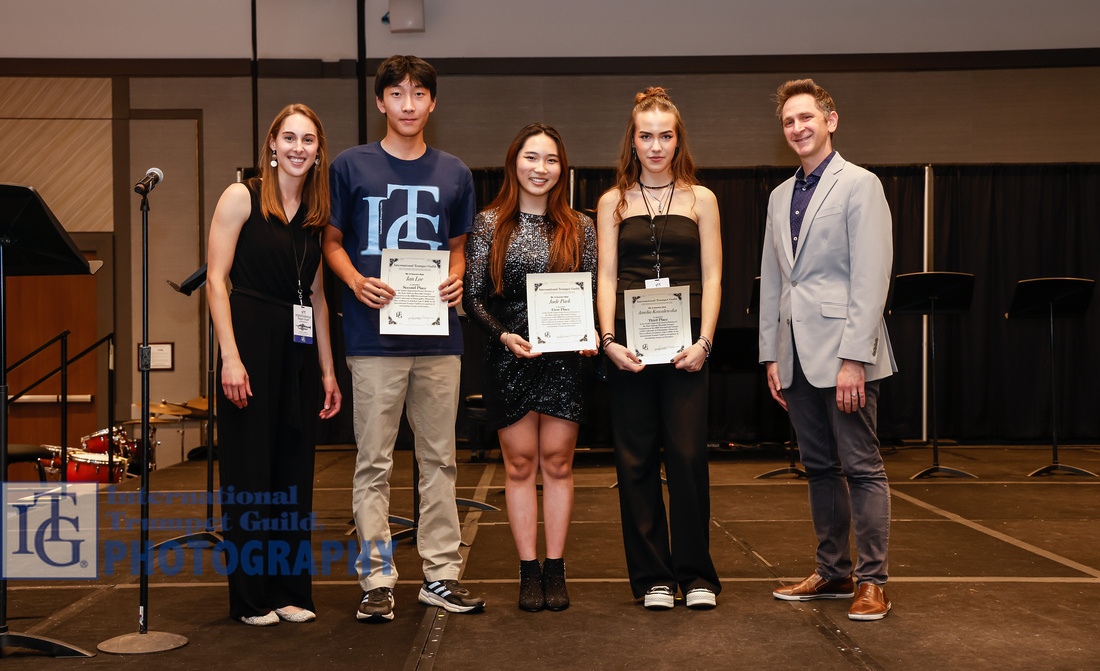

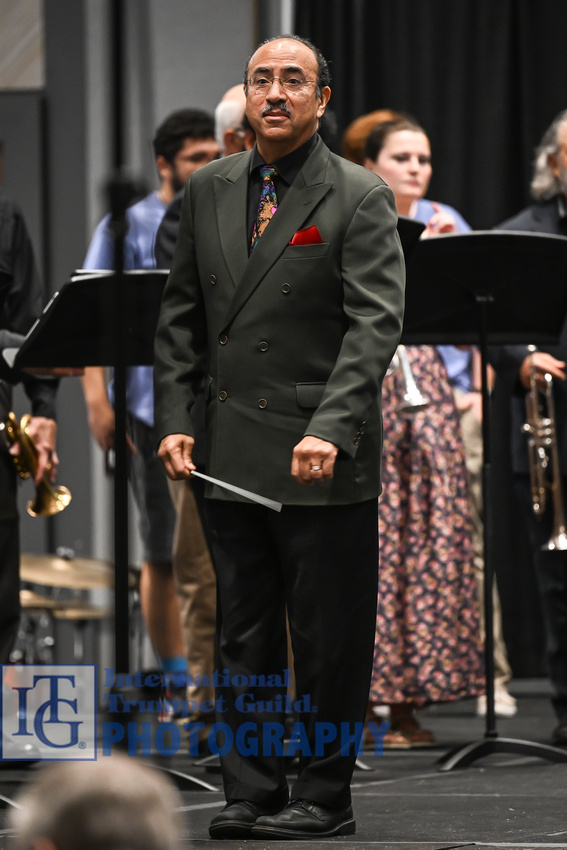

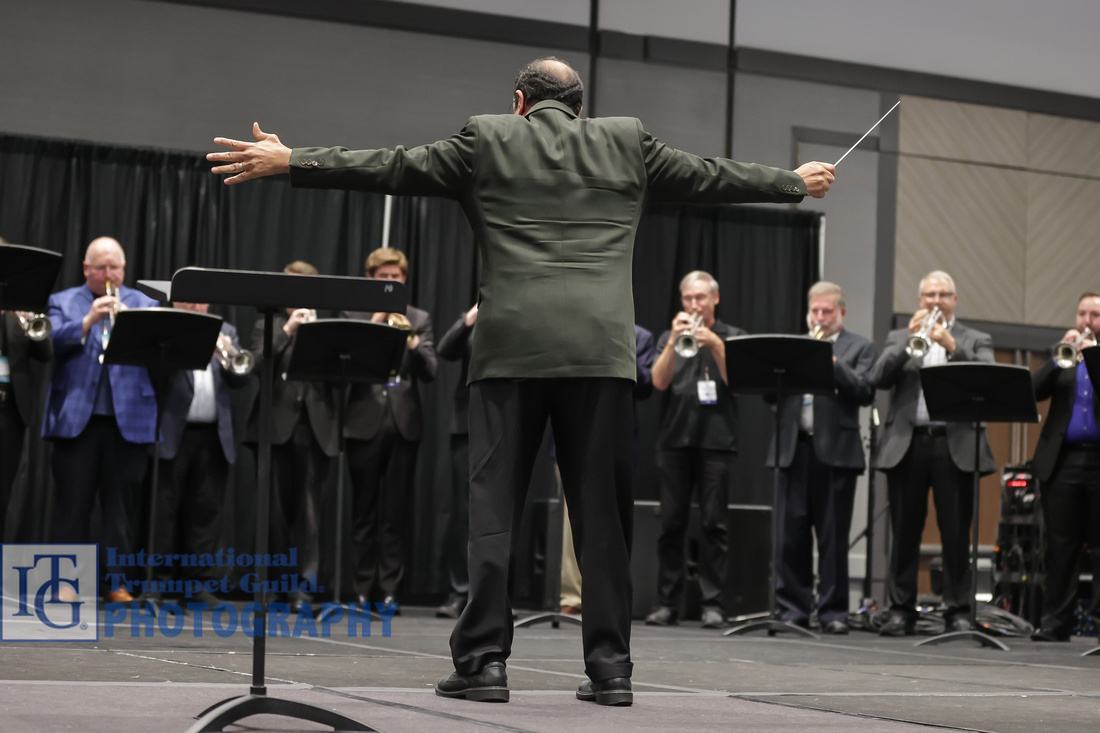

Evening Concert - Charles Lazarus and the Minnesota Orchestra: A Night in the Tropics
Just one block away from the ITG Conference hotel, Charles Lazarus and the Minnesota Orchestra gave a fabulous program in Symphony Hall. The audience in the Roberta Mann Grand Foyer was entertained before the program by the Tromba Mundi trumpet ensemble with Bryan Appleby-Wineberg, Scott Belk, Jean-Christophe Dobrzelewski, John Marchiando, William Stowman, and Joey Tartell.
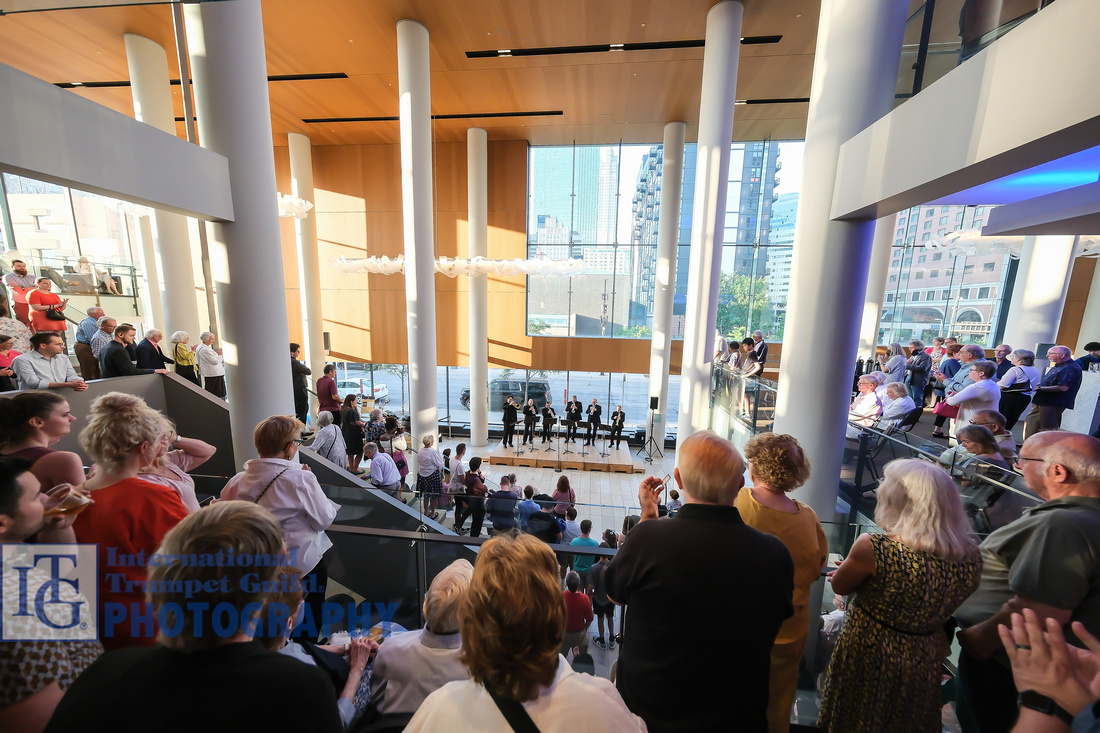

Trumpeter Charles Lazarus is a performer, composer, producer, and band leader who has played with the Dallas Brass, Meridian Arts Ensemble, and Canadian Brass. He is currently fourth trumpet of the Minnesota Orchestra, having created and produced several orchestral pops shows and made a live recording of Steve Heitzeg’s American Nomad Concerto. Lazarus has appeared as a soloist with numerous orchestras around the US and Canada; performed with the Empire Brass, New York Philharmonic Principal Brass, London Brass, and Barry White; and opened for Tony Bennett. Lazarus has performed and taught masterclasses throughout North America, Asia, and Europe.
After the orchestra, conducted by conductor Sarah Hicks, started the program with Arturo Márquez’s Danzon No. 2, Lazarus came onstage to perform his own composition, Kilauea Fountains, with his rhythm section (including Tommy Barbarella on piano, Jeff Bailey on bass, David Schmalenberger on drums, and Daryl Bourdreaux on Latin percussion) and full orchestra. Lazarus was fantastic throughout the program as both an entertainer and trumpeter.
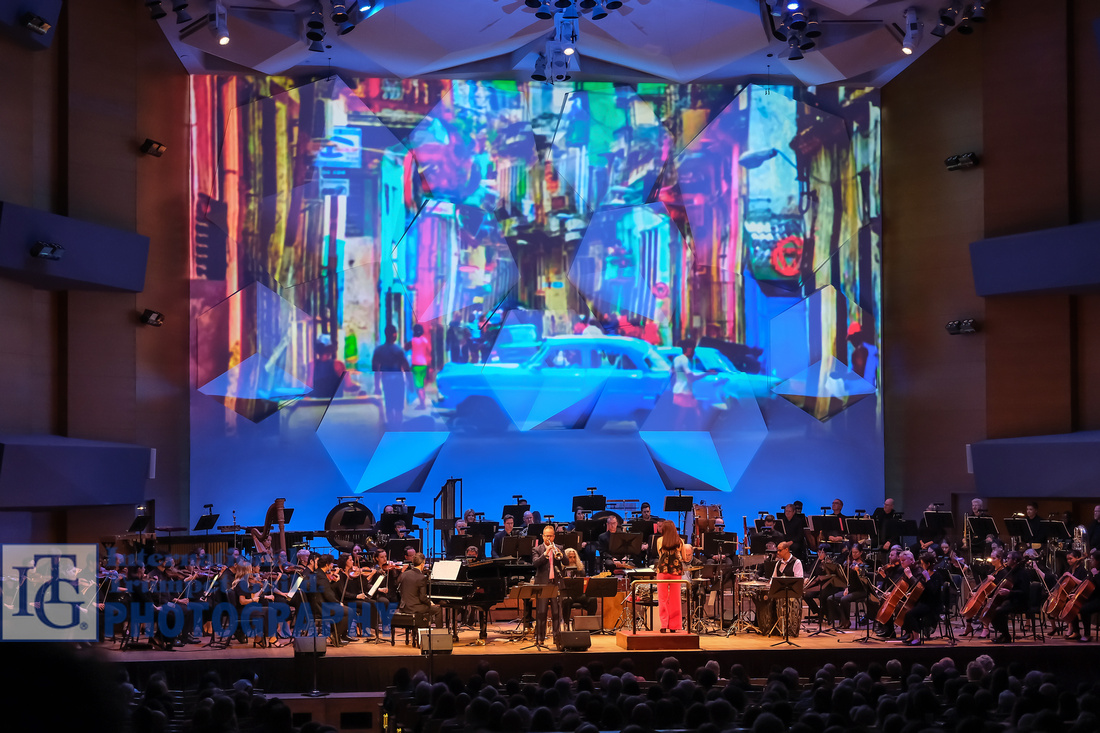



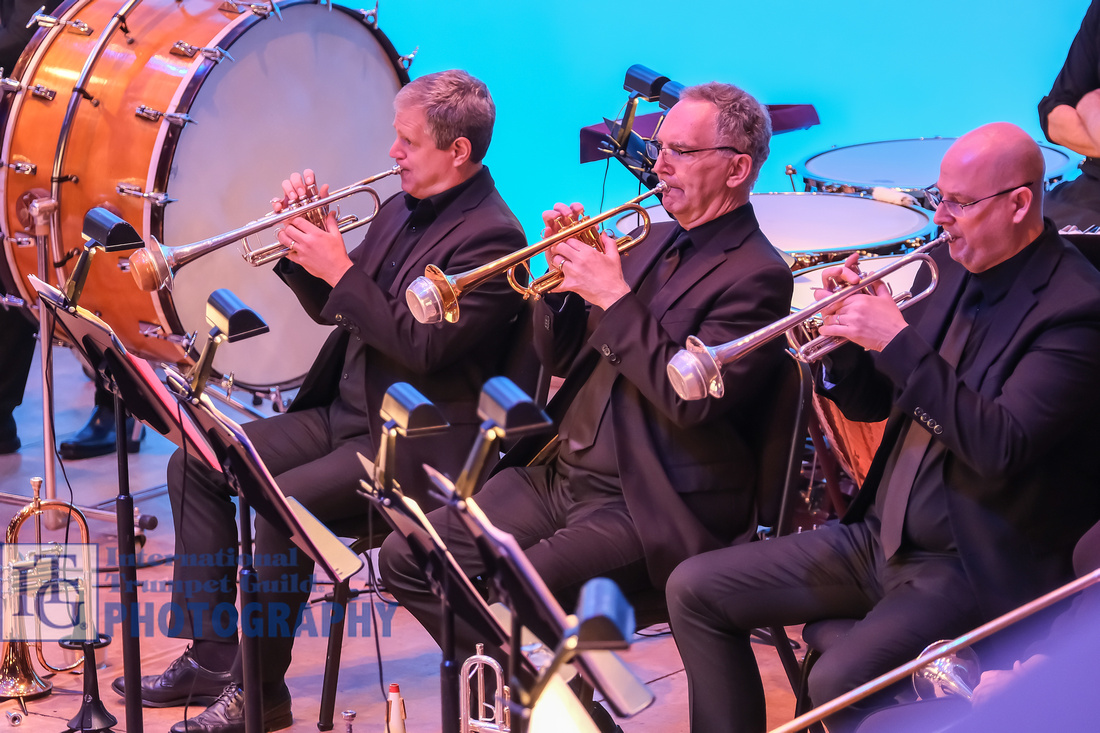

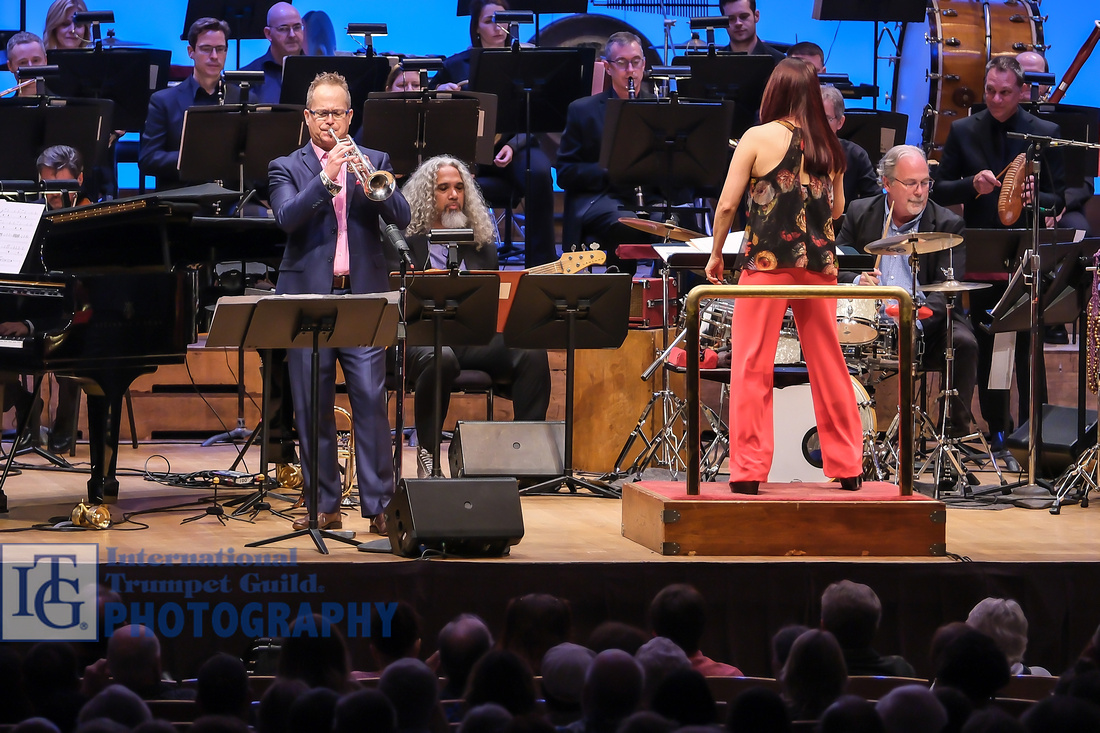

Other pieces on the program included Lazarus’s Dance Honu, Waves, Juan Tizol and Duke Ellington’s Caravan, Consuelo Velázquez’s Besame Mucho (Lazarus with associate concertmaster Alan Snow), and Dean Martin’s Sway. On Zorba the Greek, by Mikis Theodorakis and made popular by Herb Albert, Minnesota Orchestra trumpeters Douglas Carlsen, Robert Dorer, Marissa Benedict, and Martin Hodel came out front to play with Lazarus in the style of The Tijuana Brass.
After the intermission, Lazarus brought out Rex Richardson, David Cooper, and Scott Belck to trade burning solos on Tito Puente’s Ran Kan Kan, which Lazarus humorously explained meant “nothing at all in any language.” A big thrill for the Minnesota Symphony regulars was when conductor laureate Osmo Vänskä came onstage to play clarinet with Lazarus on Romani Dances, a duet written by Lazarus in a Klezmer style. Lazarus demonstrated his love of Latin jazz from the 1950s with his beautiful version of Isolina Carillo’s Dos Gardenias. After the closing tribute to Antônio Carlos Jobim, the audience was on its feet in appreciation of Lazarus’s spectacular, beautiful, and effortless playing on trumpet, flugelhorn, and piccolo trumpet all night long. He obliged the full house by playing Conrad Gozzo and Billy May’s Gopher Mambo as an encore, thrilling everyone one more time with his plunger technique and piccolo playing on this 1954 song originally written for “The Inca Princess,” Yma Sumac. Sumac had been noted for her enormous vocal range, and ITG members now know Charles Lazarus for his enormous trumpet range! (Stanley Curtis)
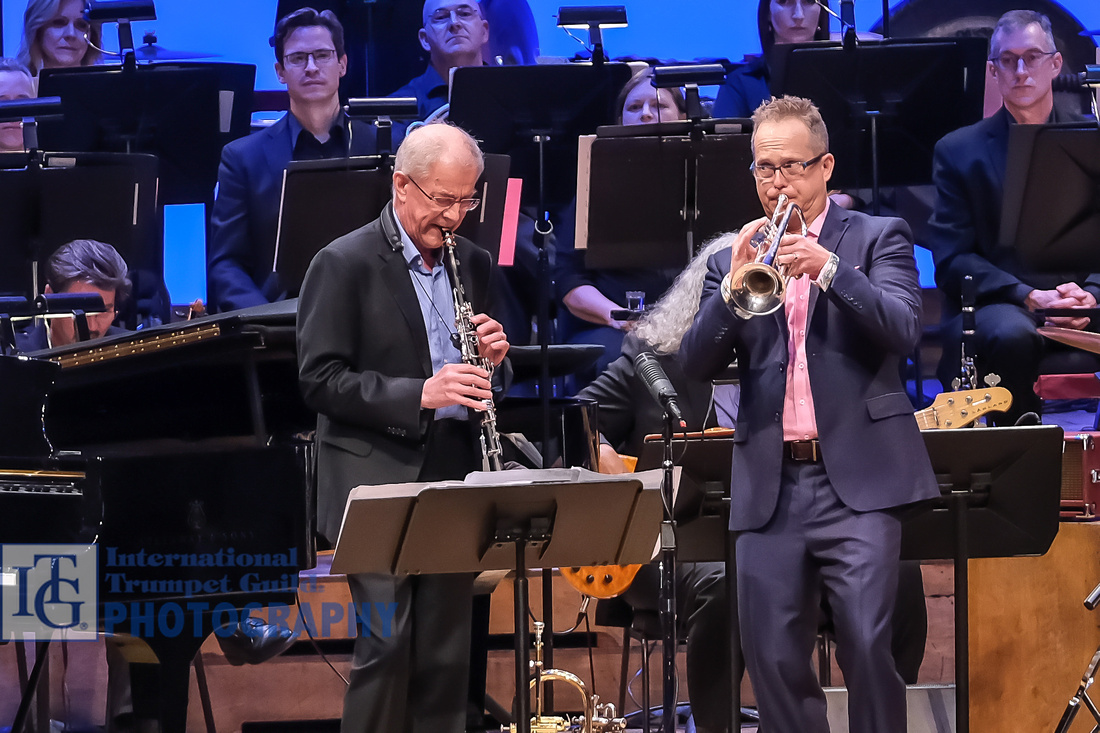

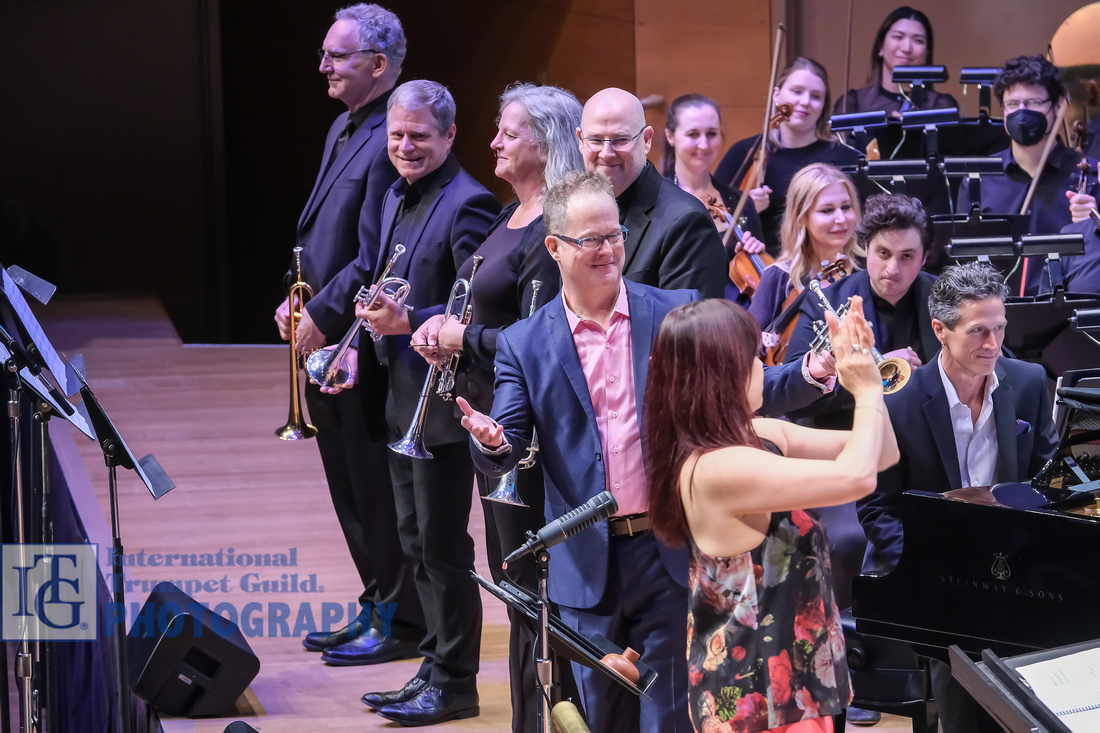



David Pastor Jazz Quartet concert: Cool Mads
After a slight delay, the final concert of the conference, featuring the David Pastor Quartet, took off like a shot. Before the group took the stage, the Escola Superior de Música e Artes do Espetáculo Trumpet Ensemble gave a stunning performance of an arranged Joaquim Campos piece. The quartet opened with a rambunctious Charles Tolliver chart, and the energy coursed through the evening from one tune to the next. The second tune in the set was the first of several Pastor originals, Visions. His sparkling solos, technique, and artistry were on full display, much to the delight of the crowd all night. Deftly backing Pastor was the Conference Trio. The mix of Pastor originals and select tunes canvassing a rich variety of styles made for a sublime close to another great ITG Conference. (Richard Tirk)
Click here for more photos from the ITG Conference